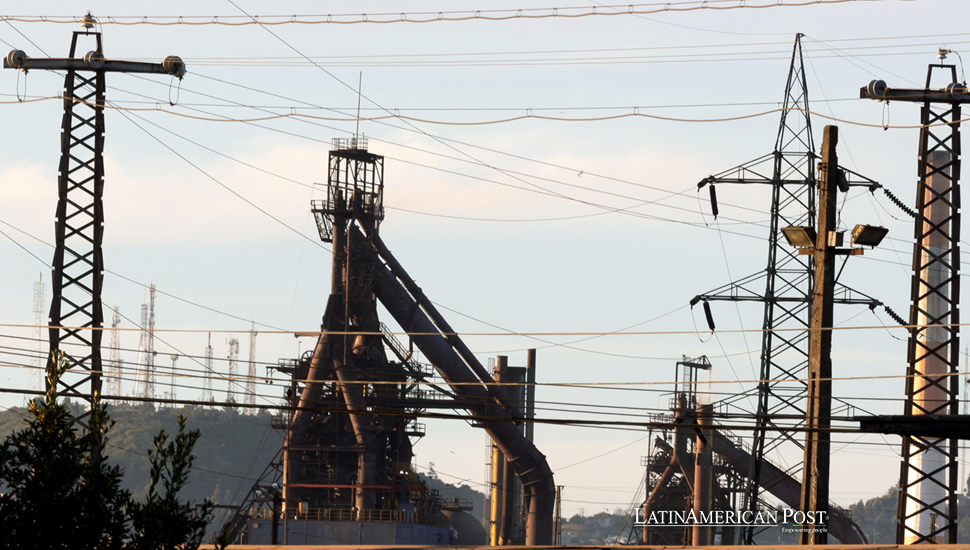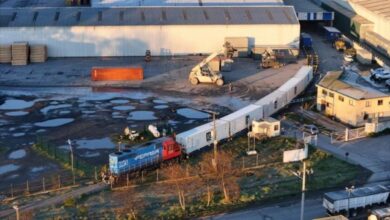Huachipato’s Closure and Chile’s Steel Industry Future

After 74 years as a driving economic force, Huachipato, Chile’s largest steel plant, has shut down. The closure impacts thousands of workers and prompts BioBío’s region to seek a new industrial identity amid global competition and environmental challenges.
A Blow to Chile’s Industrial Heart
The flame of Huachipato’s iconic chimney, a symbol of Chile’s largest steel plant and a beacon of industrial pride in the BioBío region, was extinguished yesterday , marking the end of a 74-year legacy. For decades, Huachipato had been the economic engine of the area, but this unexpected closure signals not just the end of an era for the steel industry in southern Chile but a profound shift in the country’s industrial landscape.
The final shutdown came with the closure of the coke plant, the heart of the facility, which produced the essential coal needed to transform iron into steel. “The coke plant has always been the heart of Huachipato, and it has never been stopped before now. Once it stops, it cannot restart,” Fernando Orellana, president of Huachipato’s Sindicato 2, told EFE.
Located in Talcahuano, about 500 kilometers from Santiago, Huachipato, owned by Grupo CAP, had long been a staple of the Chilean steel industry. However, fierce competition from cheaper Chinese steel imports, even with government-imposed tariffs, led to losses totaling $412 million in just the first half of 2024. The unsustainable financial situation culminated in the plant’s closure, leaving over 20,000 direct and indirect workers without employment.
Veteran workers like Orellana, who has worked at Huachipato for 37 years, are grappling with the reality of the shutdown. However, the impact is not limited to the older generation; younger workers, such as 29-year-old Ricardo Guajardo, are also affected. “We thought we would retire with this company, but now we have to reinvent ourselves and find other alternatives,” Guajardo reflected.
Economic Ripple Effect
The closure of Huachipato will have profound economic repercussions for the BioBío region, which has long been dependent on the manufacturing industry. According to estimates by the Universidad Católica de la Santísima Concepción (UCSC), the shutdown will result in a 3% reduction in the region’s Gross Domestic Product (GDP) in an area that contributes nearly 6% to the national economy.
“Historically, the manufacturing industry played a significant role in this region, but over the last decade, it has diminished in favor of services. Now we are in a transition phase due to crises in traditional industries like steel,” said Álvaro Ananías, president of the Chamber of Production and Commerce of BioBío (CPCBB), in an interview with EFE.
The regional economy has been experiencing steady growth over the past four years, but Chile’s Central Bank reported a 0.9% decline in the second quarter of 2024. The shutdown of Huachipato will further exacerbate this economic slowdown, particularly for the local businesses that had long relied on the steel plant for their livelihoods.
“Huachipato was a key buyer for many small and medium-sized suppliers in the region and across the country,” explained Ananías. The plant’s closure will result in an estimated loss of $350 million in annual purchases, which could lead to the collapse of several related businesses. “A major purchasing power is being lost here,” he added.
For BioBío, which has historically thrived on manufacturing, the closure of Huachipato highlights the urgent need for economic diversification. With key industries like steel faltering, regional leaders are now tasked with finding new growth drivers to ensure long-term economic sustainability.
Chile’s New Industrial Path
As the economic landscape in BioBío shifts, Chile’s government is stepping in with plans to bolster the region’s industrial future. Recognizing the need for urgent action, the government has introduced an industrial strengthening plan to revitalize the sector and protect jobs. This comprehensive strategy includes accelerating public and private investments, developing new industries, and exploring environmentally sustainable approaches to steel production, such as “green steel.”
The Mesa por el Empleo (Employment Table), an initiative comprised of over 50 organizations, has been actively working to develop short-, medium-, and long-term strategies to “reconvert” and “reindustrialize” the BioBío region. “The reconversion has to be broad and focused on exploring new businesses, with a strong emphasis on continuous education,” emphasized Fernando García, president of the Association of Metallurgical and Metalworking Industries (Asimet).
One of the most immediate solutions, according to Álvaro Ananías, is to increase public investment and reignite the industrial squid fishing sector, which has been limited since a 2018 law prioritized small-scale fishers. Ananías believes that reinvesting in this industry could help create jobs in the short term.
Meanwhile, Horacio Fuentes, president of the Confederation of Metallurgical Workers of Industry and Services (Constramet), advocates for reskilling displaced workers to transition into the mining sector, which has the potential to absorb many of those left unemployed by Huachipato’s closure. “Mining could be one of the industries that absorbs a large portion of the unemployed workers,” Fuentes told EFE.
Despite these efforts, the short-term alternatives for the thousands of displaced workers remain limited, and many are finding it challenging to find new opportunities. “It’s going to be hard for many of us to find jobs because there’s a shortage of work,” lamented Orellana. The regional unemployment rate is likely to spike in the coming months as the ripple effects of the closure continue to be felt.
Workers’ Hopes and Uncertainty
For many workers, Huachipato’s closure feels like the end of a dream. Younger employees like Ricardo Guajardo, who joined the company expecting a long career, are now contemplating an uncertain future. “When the company reopens, I want to come back, find a better position, and stay until retirement,” Guajardo said, clinging to the hope that Huachipato may one day reopen its doors.
The prospect of reopening Huachipato in the future remains a possibility, albeit distant. Industry insiders have speculated that the plant could resume operations in four to five years, with a renewed focus on producing “green steel” and utilizing renewable energy sources. This would align with global trends toward sustainable industrial practices and potentially revive Chile’s position in the steel industry.
In the meantime, workers like Guajardo are left to navigate the problematic reality of unemployment in a region where jobs are scarce. Many are considering retraining or relocating to other areas in search of work, while others remain hopeful that the government’s industrial strengthening plan will bring new opportunities to BioBío.
For those who spent decades at Huachipato, the closure is not just the loss of a job but the end of a way of life. “For many of us, Huachipato was more than a company—it was a community,” said Orellana. “We believed we would retire here, and now we have to face the reality of starting over.”
The emotional toll of the closure is evident, but so is the resilience of the workers and the broader community. As BioBío embarks on this transition period, the region’s ability to adapt and evolve will be critical in determining its future success.
The closure of Huachipato, Chile’s largest steel plant, marks the end of a 74-year legacy and the beginning of a challenging new chapter for the BioBío region. Once a powerhouse of the Chilean economy, the steel plant’s shutdown has left thousands of workers unemployed and sent shockwaves through the local economy.
As the region grapples with the economic fallout, the Chilean government and industry leaders are working to find solutions, including efforts to revitalize the industrial sector and develop new industries. However, the road ahead is uncertain, and for the displaced workers, finding new opportunities in a rapidly changing job market will be no easy task.
Also read: Discover the Flavors of Ibero-American Cities Through Gastronomy
Despite the challenges, there is hope that Huachipato may one day reopen with a renewed focus on sustainability and green energy. Until then, the community must rely on its resilience and adaptability to navigate this difficult period and emerge more robust in adversity





